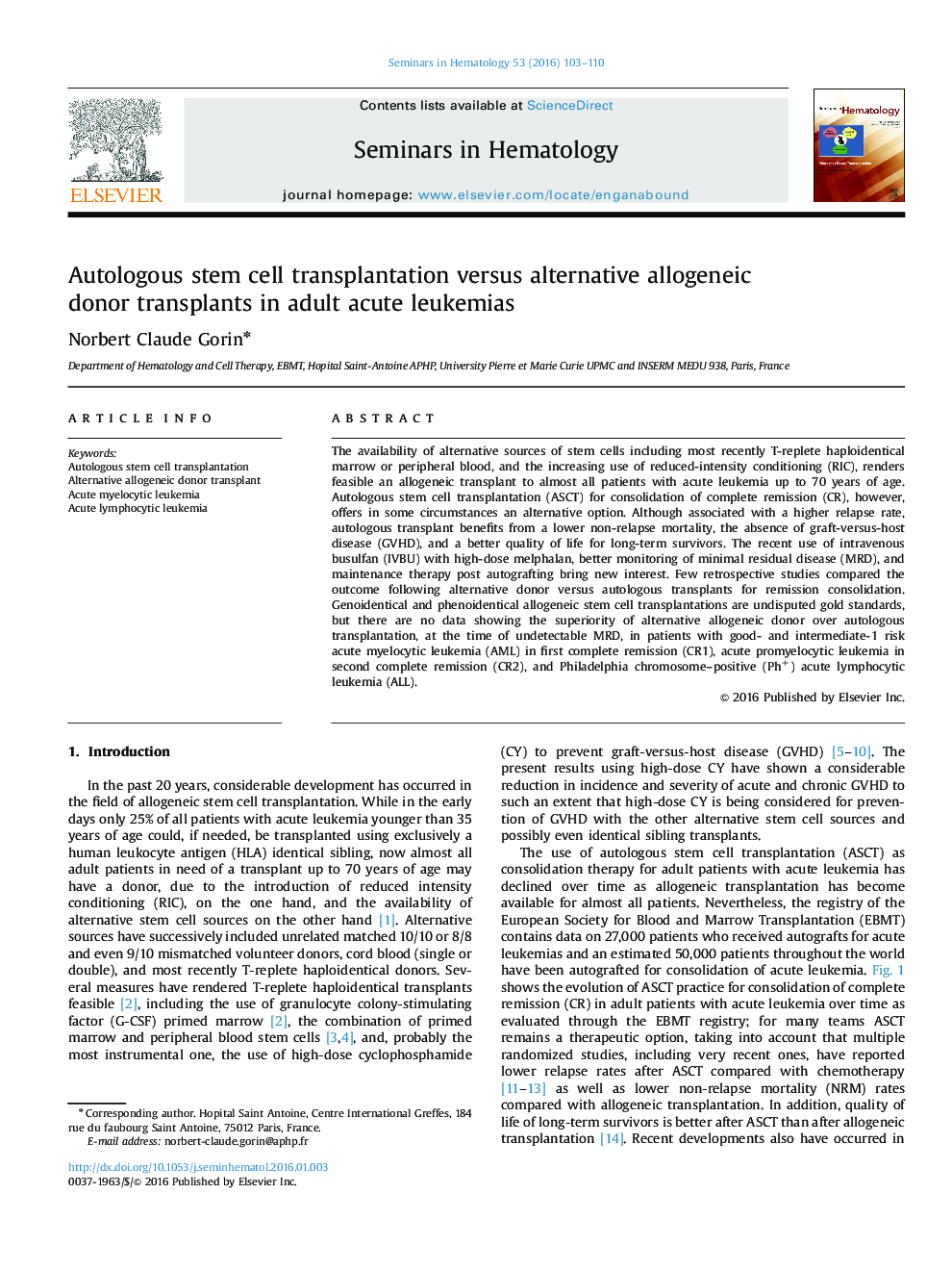| Article ID | Journal | Published Year | Pages | File Type |
|---|---|---|---|---|
| 3333385 | Seminars in Hematology | 2016 | 8 Pages |
The availability of alternative sources of stem cells including most recently T-replete haploidentical marrow or peripheral blood, and the increasing use of reduced-intensity conditioning (RIC), renders feasible an allogeneic transplant to almost all patients with acute leukemia up to 70 years of age. Autologous stem cell transplantation (ASCT) for consolidation of complete remission (CR), however, offers in some circumstances an alternative option. Although associated with a higher relapse rate, autologous transplant benefits from a lower non-relapse mortality, the absence of graft-versus-host disease (GVHD), and a better quality of life for long-term survivors. The recent use of intravenous busulfan (IVBU) with high-dose melphalan, better monitoring of minimal residual disease (MRD), and maintenance therapy post autografting bring new interest. Few retrospective studies compared the outcome following alternative donor versus autologous transplants for remission consolidation. Genoidentical and phenoidentical allogeneic stem cell transplantations are undisputed gold standards, but there are no data showing the superiority of alternative allogeneic donor over autologous transplantation, at the time of undetectable MRD, in patients with good- and intermediate-1 risk acute myelocytic leukemia (AML) in first complete remission (CR1), acute promyelocytic leukemia in second complete remission (CR2), and Philadelphia chromosome–positive (Ph+) acute lymphocytic leukemia (ALL).
